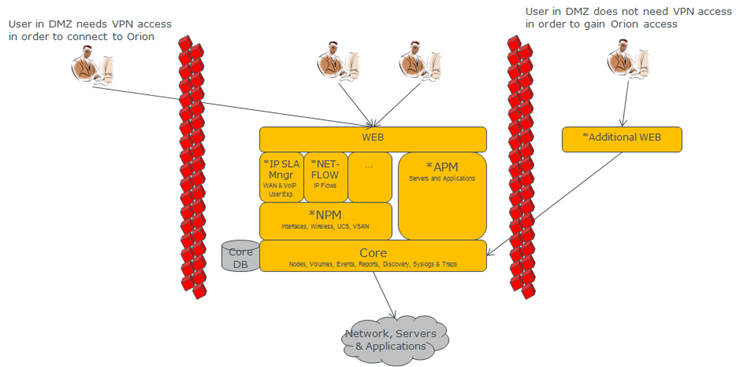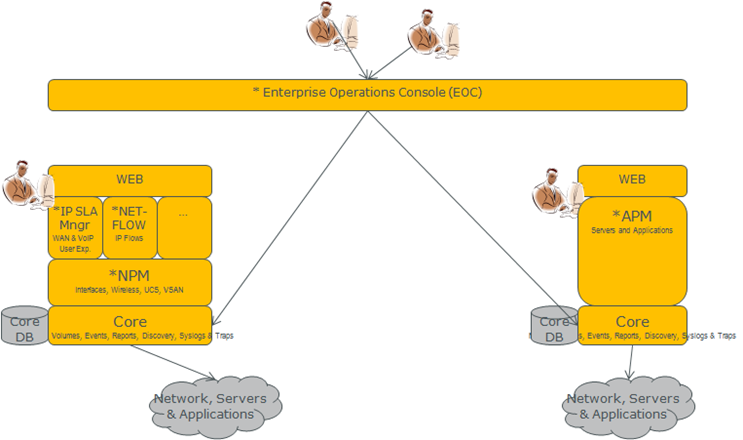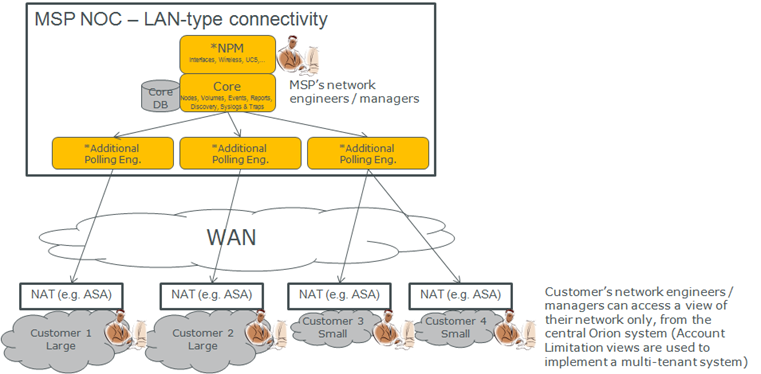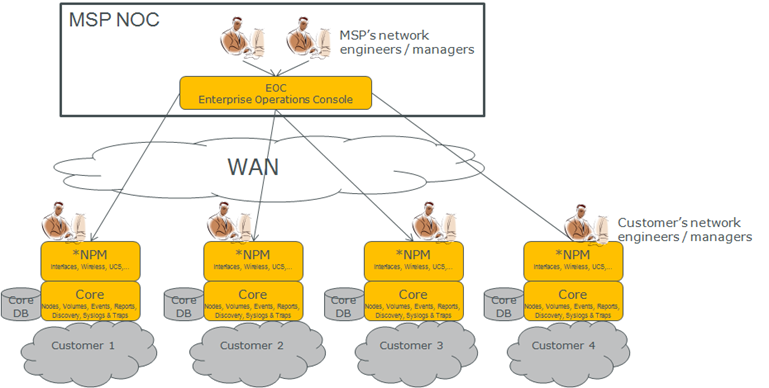This blog recaps in relatively simple terms and diagrams, the basics of Orion’s architecture.
It is obviously not exhaustive in terms of the products and the deployment combinations, but it will hopefully give you the basic rules so you can easily derive and adapt them to your particular Orion deployment.
This blog is designed to help you getting rapidly familiar with most of the concepts and terminology but does not replace the architectural considerations described in each product’s user documentation set.
It is also a good set of pointers to many excellent blog postings that have been written in the past on all these products and components. Just follow the links…
The “*” in front of the names in the diagrams below, denotes commercial products. Boxes without “*” are modules that come with the Orion infrastructure and cannot be bought (e.g. Core).
I hope you’ll enjoy it and like always, post your comments and questions here, we’ll try to respond to them and improve this blog.
Basic software architecture

Scalability: Growing an instance of Orion
- With the Additional Web server (more users)
- And the Additional Polling Engine (larger/more networks)

Scalability: Consolidating multiple instances of Orion
- EOC can be used for scalability or organizational needs (e.g. regional and national responsibilities; visualization offered at both levels)

Segmented deployments
- Avoiding VPN accesses with the Additional Web Server

Standalone products: APM, UDT, IPAM, NCM, SEUM

Standalone products (shared DB server)
- It is possible to host several SQL Server databases on the same physical database server
- We do not support two instances of Orion products sharing the same database, but multiple Orion database can share the same SQL Server host if it is appropriately sized
- We recommend to run the DB Server on a physical server (not a VM)


MSP-type deployment
- Today, there are two recommended ways to deal with MSP-type deployments of Orion, where an MSP manages Customer networks that have potentially overlapping IP Addresses
NAT-based deployment: Network Address Translators translate the customer domain addresses, so that they are all unique from an Orion perspective
EOC-based deployment: a full instance of Orion is deployed per Customer and they are consolidated at the MSP level by EOC
NAT eliminates overlapping IP addresses
Makes identifications of managed devices more complex because the translated IP’s don’t make sense to report readers. This can be addressed by populating custom properties with IP’s or Names that will not be affected by any translation.


- More on MSP deployment in general and multi-tenancy in particular here